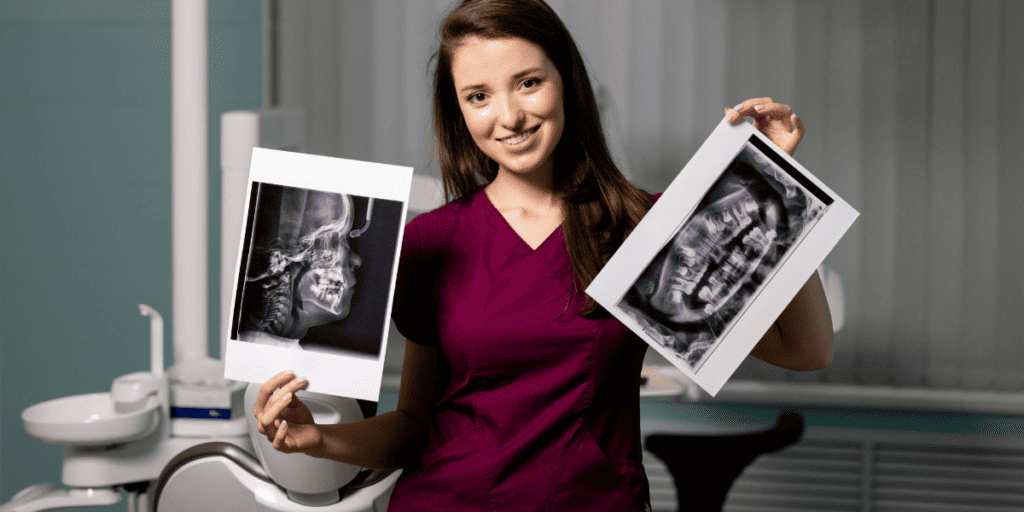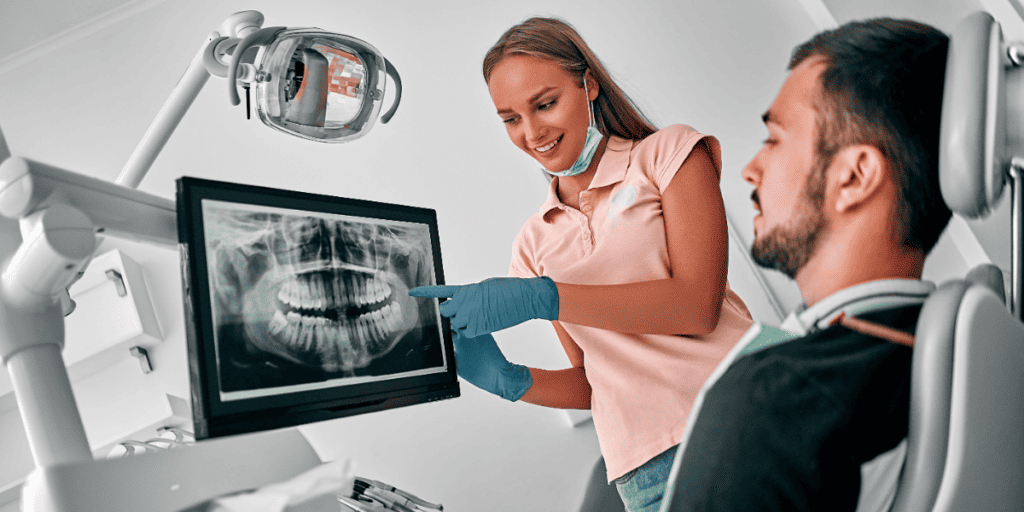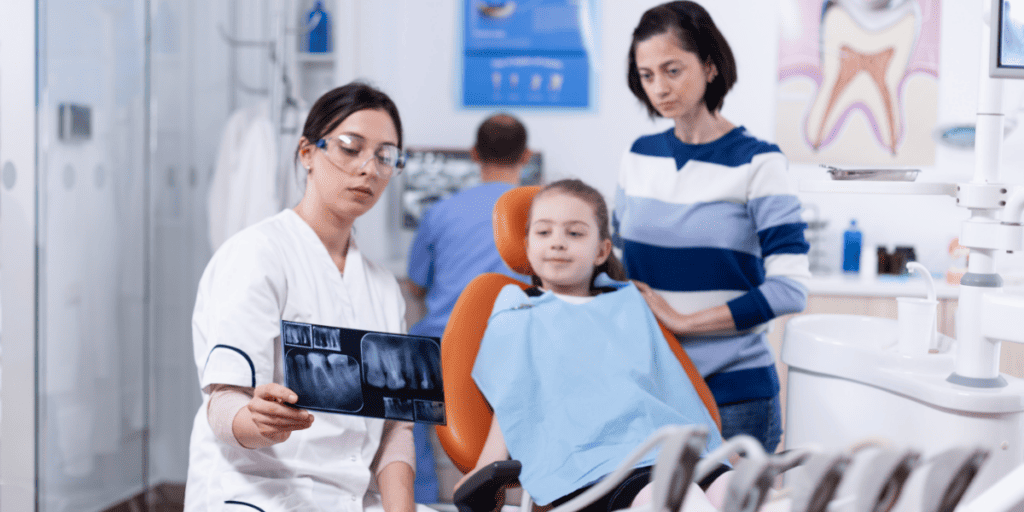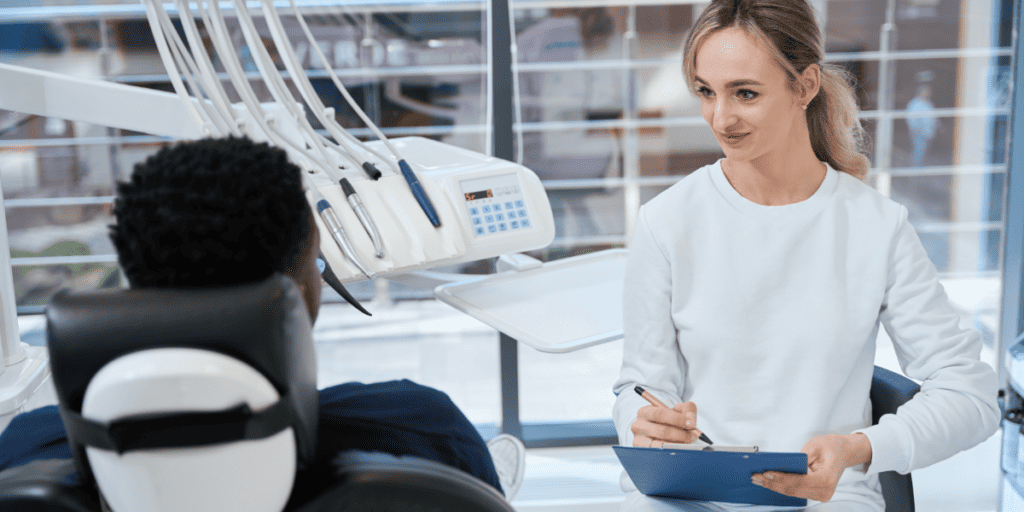Secure Limits: How Many Dental X-rays Are Safe In A Month?

Dental X-rays are an essential part of dental care, acting as a valuable tool in diagnosing, treating, and maintaining oral health. However, patients often wonder about their safety, especially when needing multiple X-rays within a short time frame. Hence, the crucial concern is, “How many dental X-rays are safe in a month?”
Importance of dental X-rays
Dental X-rays, or radiographs, are images that allow dentists to get a detailed picture of your oral health that the naked eye can’t provide. They help identify problems such as cavities, tooth decay, impacted teeth, bone loss, and certain types of tumours. X-rays are crucial in planning treatments like root canals, dental implants, and orthodontics.
Role and safety of dental X-rays
Among the many diagnostic tools utilized by dental professionals, dental X-rays are one of the most valuable. They provide a highly detailed picture of a patient’s oral health, which may not be visible to the naked eye. However, patients often express concerns about radiation exposure and question the safety of frequent X-rays.

X-rays in dental health
Dental X-rays, also known as radiographs, are a crucial aspect of quality dental care. They allow dental professionals to diagnose oral diseases and conditions that may not be detectable through a standard dental exam. X-rays can reveal:
Tooth decay, including decay beneath fillings or in between teeth.
Bone loss associated with gum disease.
Abscesses or infections at the root of the tooth.
Tumors, either cancerous or non-cancerous.
By providing a clear picture of these areas, X-rays guide dental professionals in planning the most effective treatment strategies.
How do dental X-rays work?
Dental X-rays work by passing a controlled amount of X-ray radiation through the oral structure. The radiation is absorbed differently by various tissues. Teeth, being denser, appear light on the X-ray film, while less dense tissues like gums and cheeks appear dark.
Digital X-ray is an innovative discovery, where a sensor captures the image and sends it to a computer, reducing radiation exposure and providing immediate, high-resolution images.
Assessing the risks of radiation exposure
The primary concern patients often have with dental X-rays is the associated radiation exposure. However, it’s important to note that the amount of radiation from dental X-rays is significantly low and generally considered safe.
Modern dental practices have significantly reduced radiation exposure with:
Digital X-rays: These use about 70% less radiation than traditional film X-rays.
Lead aprons and thyroid collars: These provide additional protection by absorbing any scattered radiation.
Regular maintenance and testing: Professionals regularly service and check dental X-ray machines for radiation safety.
Factors affecting the safety limits of dental X-rays

Several factors influence the safe limits of dental X-rays:
Age: Children may require more frequent X-rays as their teeth and jaws are still developing.
Oral health: Patients with a history of tooth decay or gum disease may require more frequent X-rays.
Pregnancy: Women who are pregnant are typically advised to postpone non-essential X-rays to avoid any risk to the fetus.
Unraveling safety
Radiation exposure from dental X-rays is low compared to other sources of exposure like natural environmental radiation. Modern dentistry has significantly reduced the amount of radiation exposure during dental X-rays through:
Digital X-rays: Digital X-rays use about 70% less radiation than conventional film X-rays.
Lead aprons and thyroid collars: These protective shields help protect patients’ bodies from any unnecessary exposure.
High-speed film: The use of high-speed film helps decrease exposure time, thereby reducing the amount of radiation.
How many dental X-rays are considered safe in a month?
The number of safe dental X-rays isn’t generally dictated by a set timeframe, such as a month, but rather by the patient’s individual health needs. The ADA promotes a selective approach where the type and frequency of X-rays are personalized based on factors like the patient’s age, oral health, risk for disease, and any symptoms of oral disease.
For a healthy adult with good oral hygiene and no symptoms of oral disease, the ADA suggests bitewing X-rays (those that help dentists check for cavities between teeth) every 18 to 36 months. However, children, teenagers, and adults with a high risk of tooth decay may need X-rays more frequently to monitor potential changes or new decay.
Balancing benefits with radiation exposure
The key lies in balancing the benefits of dental X-rays against the potential risk of radiation exposure. With the small quantity of radiation and the significant diagnostic benefits, dental X-rays are largely accepted as a safe and vital part of dental care.
If you’re concerned about radiation exposure, it’s essential to inform your dentist. Together, you can discuss your oral health, and decide on the best course of action for your situation.
Takeaway
Dental X-rays are a critical tool in maintaining oral health, helping diagnose issues that may not be visible to the naked eye. While radiation exposure is a valid concern, modern dental practices employ several methods to minimize this exposure, emphasizing patient safety.
The number of dental X-rays a patient may safely have doesn’t adhere to a strict ‘per month’ limit. Instead, it’s tailored to the patient’s individual oral health needs. As always, your dentist is your greatest ally in determining the best and safest course for your dental care journey. Maintain open communication with your dentist, voice your concerns, and together, you can ensure the health and longevity of your radiant smile.
Get a clear picture of your oral health with dental X-rays

Dental X-rays provide a detailed view of your oral health, helping detect problems that may be invisible to the naked eye. Our high-functioning, professional technology ensures a safe and comfortable experience while providing accurate results. Stay proactive about your dental health by scheduling an appointment today, call Aesthetic Implant and General Dentistry for a dental X-ray.
RECENT POSTS
Recent Posts
- Secure Limits: How Many Dental X-rays Are Safe In A Month? January 29, 2024
- Lasting Bright Smile: Foods To Avoid After Teeth Whitening December 26, 2023
- How Long After Teeth Whitening Can I Eat And Drink? November 27, 2023
- 5 Clear Signs It’s Time To See A Periodontist | North York October 30, 2023
- Cosmetic Dentistry: A Fast Way To Perfect Teeth | North York September 29, 2023
Category
FOLLOW us
Take a peek inside our dental office.
What Our Practice Looks

Mon - Thu: 8:30 AM - 5:00 PM
Alternating Fri: 10:00 AM - 3:00 PM
Follow Us
Contact Us

Mon - Thu: 8:30 AM - 5:00 PM
Alternating Fri: 10:00 AM - 3:00 PM
Follow Us
Contact Us
© All Rights Reserved aestheticimplantdentistry.ca
Privacy Policy | Terms of Use | Sitemap
A Dentistfind Website



